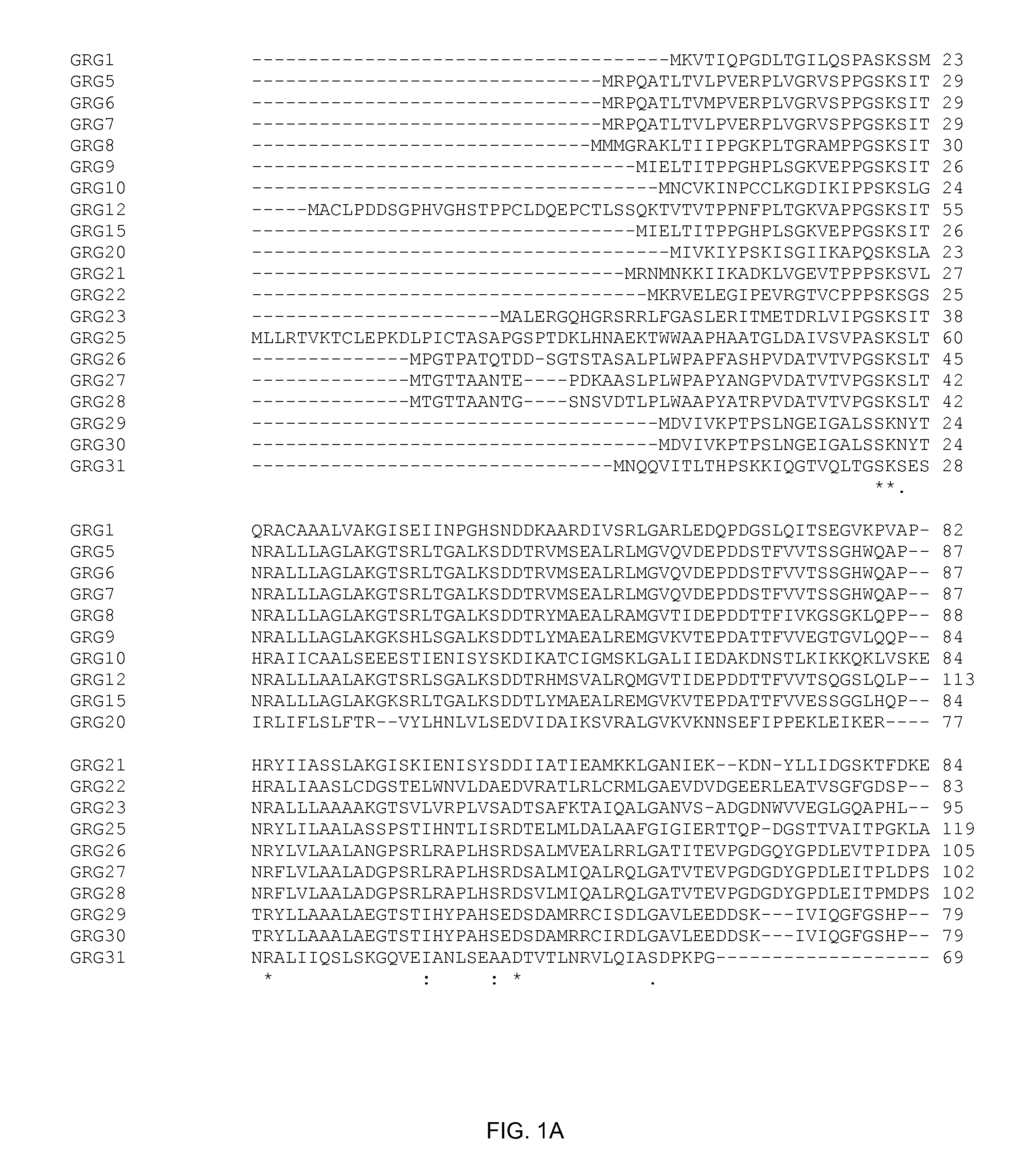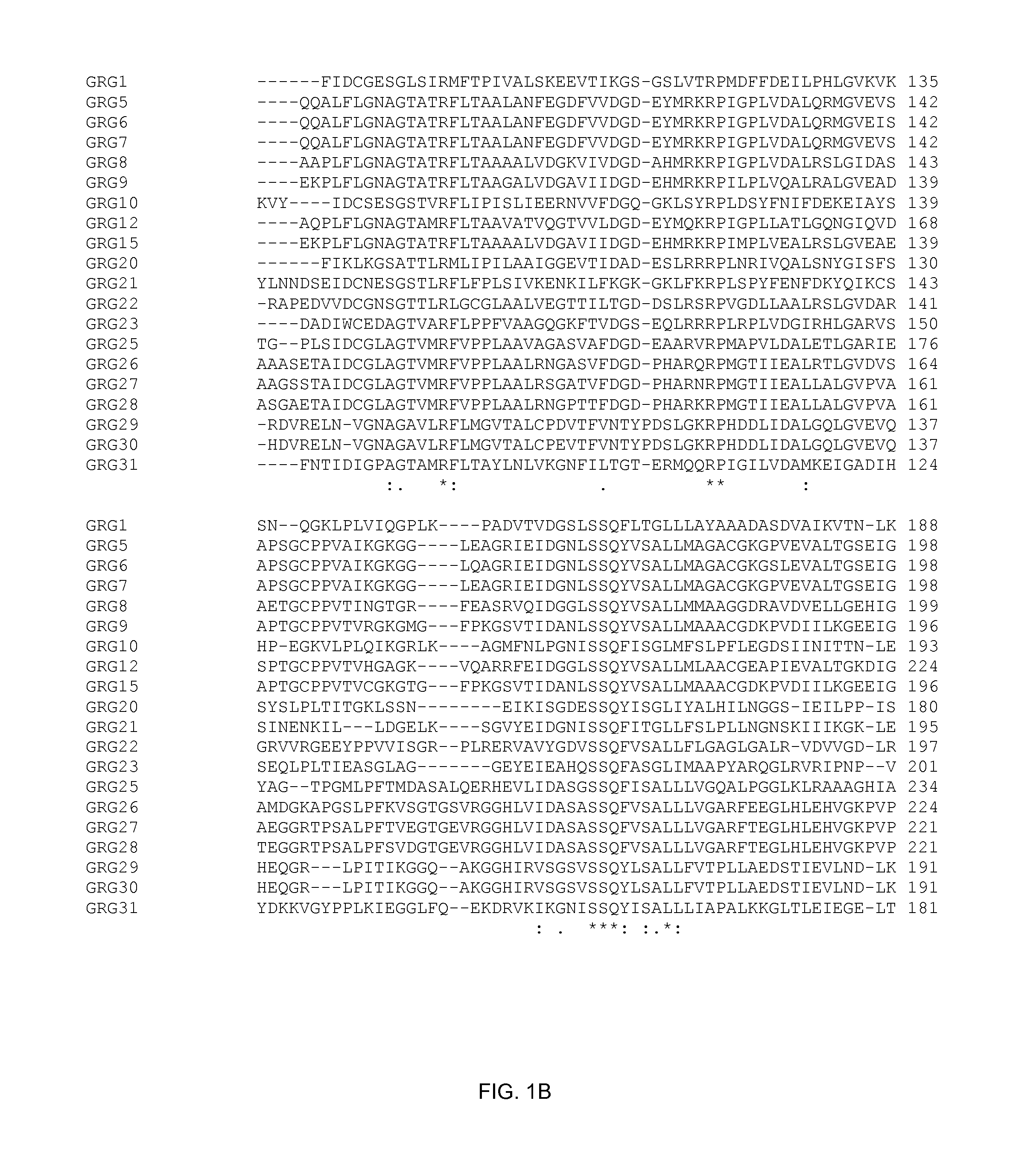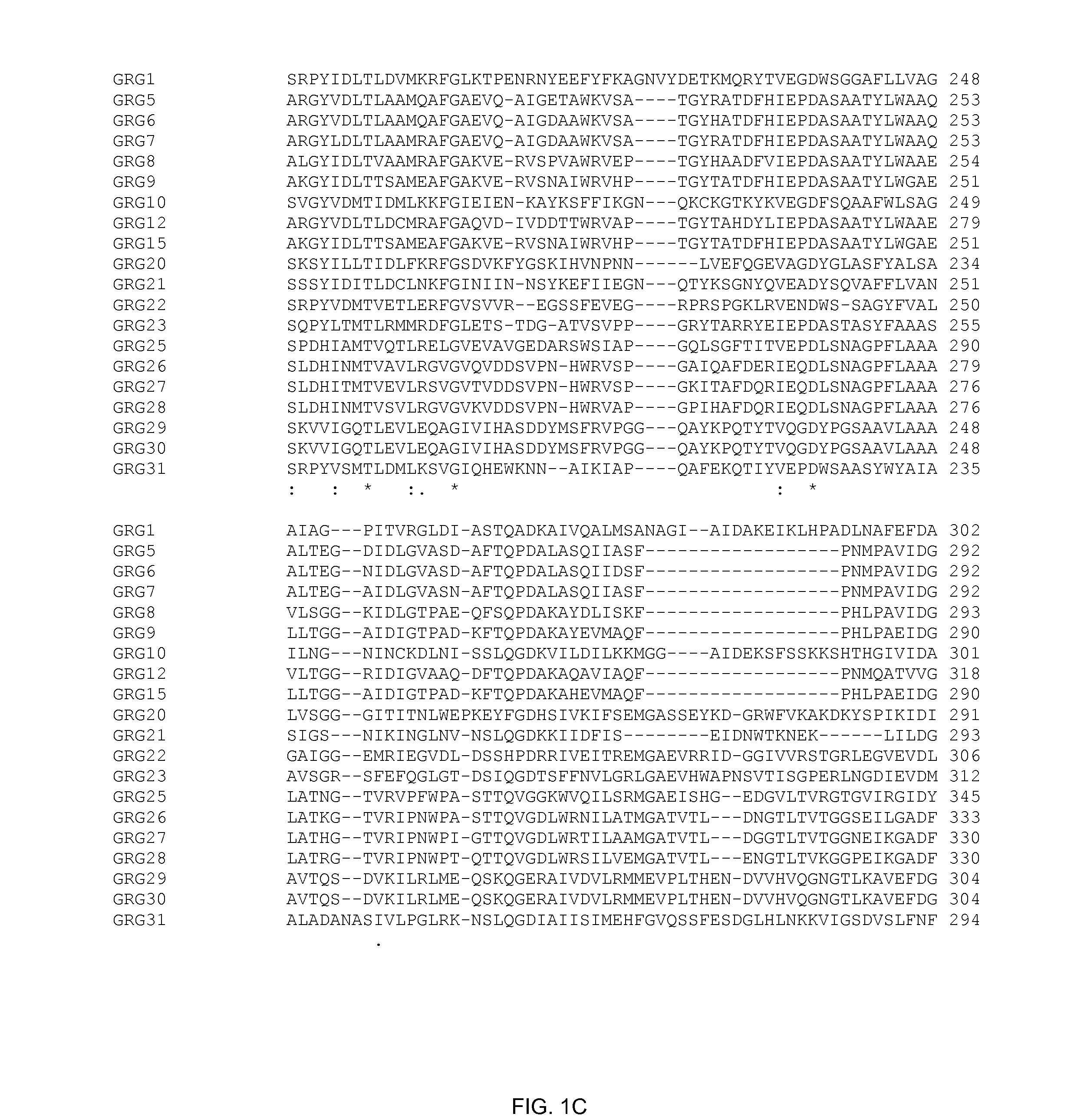Novel epsp synthase genes conferring herbicide resistance
a technology of epsp and synthase, which is applied in the field of new epsp synthase genes conferring herbicide resistance, and the gene encoding 5enolpyruvylshikimate3phosphate (epsp) synthase, which can solve the problems of toxic to bacterial cells, not only killing plant cells, but also toxic to these bacteria
- Summary
- Abstract
- Description
- Claims
- Application Information
AI Technical Summary
Benefits of technology
Problems solved by technology
Method used
Image
Examples
example 1
Isolation of ATX8909
[0087] ATX8909 was isolated by plating samples of soil on HEPES Mineral Salts Medium (HMSM) containing glyphosate as the sole source of phosphorus. Since HMSM contains no aromatic amino acids, a strain must be resistant to glyphosate in order to grow on this media.
[0088] Two grams of soil were suspended in approximately 10 ml of water, vortexed for 15 seconds and permitted to settle for 15 minutes. A 10 μl loopful of this suspension was added to 3 ml of HMSM supplemented with 10 mM glyphosate (pH 7.0). HMSM contains (per liter): 10 g glucose, 2 g NH4SO4, 9.53 g HEPES, 1.0 ml 0.8 M MgSO4, 1.0 ml 0.1 M CaCl2, 1.0 ml Trace Elements Solution (In 100 ml of 1000× solution: 0.1 g FeSO4.7H2O, 0.5 mg CuSO4.5H2O, 1.0 mg H3BO3, 1.0 mg MnSO4.5H2O, 7.0 mg ZnSO4.7H2O, 1.0 mg MoO3, 4.0 g KCl). The culture was grown in a shaker incubator for four days at 28° C. and then 20 μl was used to inoculate 2.5 ml of fresh HMSM containing 10 mM glyphosate as the only phosphorus source. ...
example 2
Cloning of Glyphosate-Resistant EPSP Synthases
[0090] Genomic DNA was extracted from the strains described in Table 1 and the resulting DNA was partially digested with restriction enzyme Sau3A 1 to yield DNA fragments approximately 5 kilobases in size. These DNA molecules were size selected on agarose gels, purified, and ligated into LAMBDA ZAP® vector arms pre-digested with BamH I. The ligated arms were then packaged into phage particles, and phage titers determined as known in the art. The resulting libraries were amplified by methods known in the art to generate a library titer of between 3×107 and 3×108 PFU / mL. For each independent library, E. coli (XL1 Blue MRF′) was then co-transfected with phage from an amplified library as well as M13 helper phage into to allow mass excision of the library in the form of an infectious, circular ssDNA as known in the art (Short et al. (1988) Nucleic Acids Research 16:7583-7600). After centrifugation of the co-infected cells, the phage-contain...
example 3
DNA and Protein Sequences of EPSP Synthases
[0094] The DNA sequences of the glyphosate-resistant EPSP synthases was determined for each of the clones in Table 2 by methods well known in the art.
[0095] grg25. The DNA sequence of grg25 is provided herein as SEQ ID NO:1. The predicted translation product of grg25 (GRG25) is provided herein as SEQ ID NO:2.
[0096] grg26. The DNA sequence of grg26 is provided herein as SEQ ID NO:3. The predicted translation product of grg26 (GRG26) is provided herein as SEQ ID NO:4.
[0097] grg27. The DNA sequence of grg27 is provided herein as SEQ ID NO:5. The predicted translation product of grg27 (GRG27) is provided herein as SEQ ID NO:6.
[0098] grg28. The DNA sequence of grg28 is provided herein as SEQ ID NO: 7. The predicted translation product of grg28 (GRG28) is provided herein as SEQ ID NO:8.
[0099] grg29. The DNA sequence of grg29 is provided herein as SEQ ID NO:9. The predicted translation product of grg29 (GRG29) is provided herein as SEQ ID NO...
PUM
| Property | Measurement | Unit |
|---|---|---|
| temperature | aaaaa | aaaaa |
| temperature | aaaaa | aaaaa |
| temperature | aaaaa | aaaaa |
Abstract
Description
Claims
Application Information
 Login to View More
Login to View More - R&D
- Intellectual Property
- Life Sciences
- Materials
- Tech Scout
- Unparalleled Data Quality
- Higher Quality Content
- 60% Fewer Hallucinations
Browse by: Latest US Patents, China's latest patents, Technical Efficacy Thesaurus, Application Domain, Technology Topic, Popular Technical Reports.
© 2025 PatSnap. All rights reserved.Legal|Privacy policy|Modern Slavery Act Transparency Statement|Sitemap|About US| Contact US: help@patsnap.com



